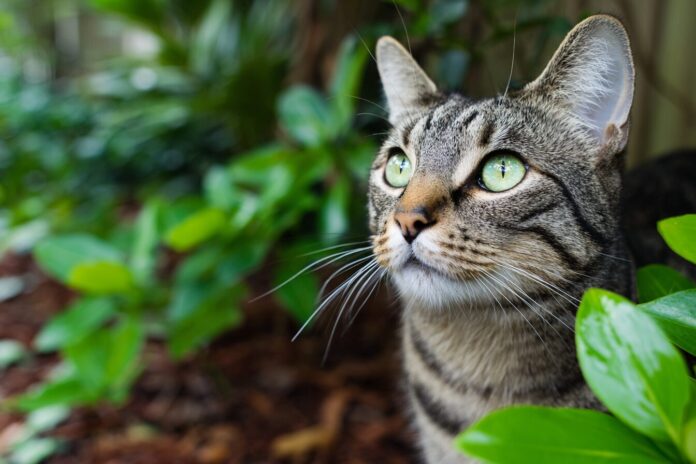Meet Pepper: The Cat Revolutionizing Virus Discovery in Florida
In the realm of scientific discovery, breakthroughs often stem from unexpected places. Most importantly, this year’s headline comes from a Florida backyard thanks to Pepper, a curious household cat whose adventures continue to astonish both the public and scientific communities. Because of his innate curiosity, Pepper has once again helped researchers identify a never-before-seen virus, proving that pets can be pivotal in enhancing our understanding of emerging pathogens.
Besides that, Pepper’s role extends far beyond that of a typical pet. His natural hunting behavior and exploratory nature connect everyday life with cutting-edge scientific research. Therefore, his contributions bridge the gap between the familiar and the scientific unknown, demonstrating that even common household animals can have an extraordinary impact on public health.
The Newest Find: Gainesville Shrew Mammalian Orthoreovirus Type 3
Pepper is no stranger to making headlines in the scientific community. Previously, he gained recognition for his involvement in the discovery of the first jeilongvirus in the United States. Now, history repeats itself when, while roaming around his Gainesville home, Pepper captured the attention of researchers again by bringing in an Everglades short-tailed shrew. His owner, Dr. John Lednicky—a noted virologist at the University of Florida—recognized this as an opportunity to advance scientific research and quickly took the shrew to his laboratory for testing.
Originally intended for studies on mule deerpox virus transmission, the specimen revealed an unexpected twist in the research. Most importantly, the tests uncovered a new strain of orthoreovirus that had never been documented before. This discovery, detailed in both UF Health and UF News, marks a significant step forward in understanding local viral ecology in Florida.
Deep Dive: Why Orthoreoviruses Matter
Orthoreoviruses are a unique genus known for infecting a broad spectrum of mammals, including humans, white-tailed deer, and bats. Because the full extent of their effects on human health is not completely understood, ongoing research remains crucial. Most importantly, even minimal exposure in vulnerable groups such as children has been associated with serious conditions like encephalitis, meningitis, and gastroenteritis.
Moreover, these viruses prompt a more extensive review of wildlife-related pathogens. Therefore, scientists are increasingly adopting integrated surveillance methods that include both conventional field studies and the unintentional assistance provided by pets like Pepper. This approach enhances our ability to monitor emerging threats and could eventually lead to timely interventions in public health crises.
Pepper’s Role in Virology: Combining Curiosity and Science
It would be tempting to dismiss Pepper’s contribution as mere chance. However, a closer look reveals a method behind the magic. Dr. Lednicky capitalizes on Pepper’s natural instincts by routinely analyzing every sample the cat brings home. Because of this systematic approach, Pepper plays the dual role of a cherished family pet and an invaluable field assistant, contributing directly to breakthroughs that were once considered impossible.
In addition, Pepper’s work has had a lasting impact on the field of virology. The newly identified virus, officially named Gainesville shrew mammalian orthoreovirus type 3 strain UF-1, has been fully sequenced. The accomplishment has been recognized in prominent scientific publications, a testimony to how everyday observations can have monumental scientific consequences. For those interested in similar scientific narratives, resources such as Popular Science offer further insights into this evolving story.
Implications for Public Health and Wildlife Surveillance
The discovery of new viral strains, like the one brought home by Pepper, carries significant implications for both public health and wildlife surveillance. Most importantly, domestic animals can serve as effective sentinel species, capable of alerting scientists to the presence of emerging pathogens. Because of their daily interactions in a variety of environments, pets can act as early warning systems, integrating natural behavior with scientific investigation.
Furthermore, the integration of pet-assisted discoveries into routine surveillance models is revolutionizing our approach to disease detection. Therefore, initiatives such as this not only accelerate pathogen identification but also enrich our understanding of how viruses circulate in natural ecosystems. For readers seeking more comprehensive resources on innovative research methods, the Mary Riley Styles Public Library provides additional recommended readings on emerging science topics.
Future Directions: Expanding Research and Surveillance Models
With two landmark discoveries under his collar, Pepper is set to continue playing a vital role in scientific research. Dr. Lednicky and his team at the University of Florida’s Emerging Pathogens Institute are excited to expand their work by adopting similar observational techniques to monitor other potential wildlife-borne diseases. Because Florida is a biodiversity hotspot, such innovative research methods could prove essential for early detection of zoonotic diseases—those that leap from animals to humans.
Besides that, these findings open a new chapter in the application of unconventional surveillance methods. Therefore, the incorporation of pet behavior into scientific protocols promises not only to improve our pathogen detection systems but also to ignite further interdisciplinary collaborations. For an in-depth view on academic standards and protocols involved in these studies, one can consult the Student Handbook provided by NHTI, which covers various research practices and safety measures.
Conclusion: Small Discoveries, Big Impact
Pepper’s knack for encountering wildlife in his neighborhood isn’t just a quirky news headline—it is a compelling reminder of the significance that small, everyday occurrences can hold for scientific discovery. Because of his contributions, scientists are now better equipped to monitor and potentially prevent the spread of emerging diseases in both humans and wildlife.
In summary, integrating everyday observations with high-tech research methodologies offers new perspectives in the fight against infectious diseases. Most importantly, Pepper’s story underlines how synergistic efforts between humans and their pets can lead to groundbreaking scientific advancements. For more updates on this fascinating journey, please visit the original stories on UF Health and UF News.
- Scientist’s cat, again, helps discover new virus – UF Health
- Scientist’s cat, again, helps discover new virus – UF News
- Pet cat helps discover a new virus – Popular Science



